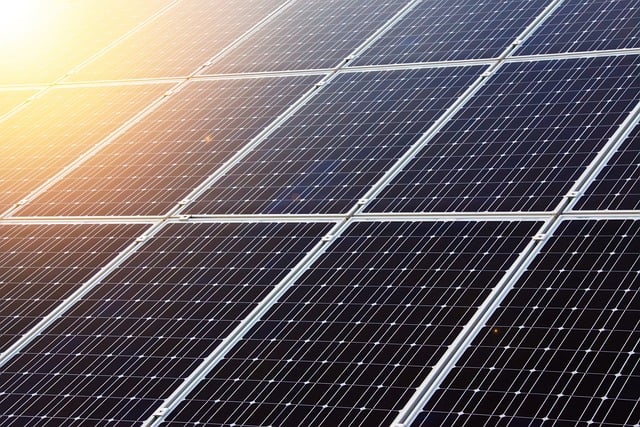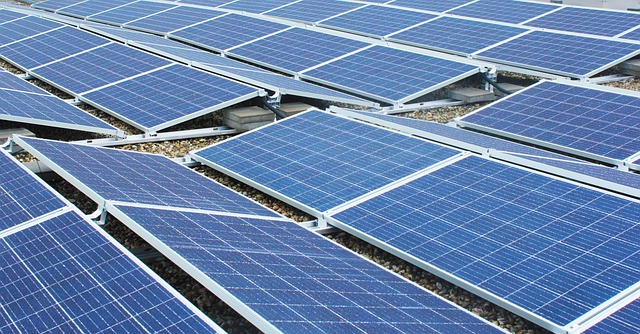Innovative Technologies Driving the Sustainable Energy Movement
The quest for sustainable energy has never been more critical than it is today. As the impacts of climate change become increasingly evident, the world is on a path to reassess its energy consumption patterns and explore innovative technologies that promise to make the energy sector more sustainable. From renewable energy sources to advanced storage solutions, the landscape of energy generation and consumption is rapidly evolving. This article delves into the innovative technologies that are driving the sustainable energy movement, examining their working principles, advantages, and future potential.
Solar Power Innovations
Solar energy harnesses sunlight and converts it into electricity. Recent innovations in solar technology have significantly improved efficiency and accessibility. The emergence of photovoltaic cells, particularly those made from perovskite, has opened new avenues in solar energy generation. Perovskite solar cells have shown promise in achieving efficiencies exceeding 25%, a significant leap from traditional silicon-based cells.
Another exciting development is the introduction of solar skins and building-integrated photovoltaics (BIPV). These technologies effectively blend solar panels with conventional building materials, allowing homes and buildings to generate energy without compromising aesthetics. By integrating solar cells directly into roofs and facades, BIPV promotes the adoption of renewable energy on both commercial and residential fronts.
Wind Energy Breakthroughs
Wind energy is another pillar of the sustainable energy infrastructure, and recent technological advances have bolstered its viability. Modern wind turbines now utilize larger rotor diameters and taller towers, which enable them to capture more wind energy and operate efficiently in low-wind conditions. Innovations in aerodynamics and materials have led to the development of lighter and more robust blades, further enhancing energy capture.
The advent of offshore wind farms marks a significant transformation in wind energy generation. By situating wind turbines in open waters, developers can harness higher and more consistent wind speeds, contributing to higher energy yields. The floating wind turbine technology is particularly groundbreaking, allowing for installations in deeper waters where traditional fixed-bottom turbines are not feasible.
Energy Storage Solutions
One of the main challenges with renewable energy sources like solar and wind is their intermittency—energy generation is not always aligned with consumption. Innovative energy storage technologies are essential to overcoming this challenge. Lithium-ion batteries have become a popular solution, especially in electric vehicles and grid storage applications. However, new alternatives are emerging to further enhance energy storage capacity.
Solid-state batteries are regarded as the next generation of energy storage technology. They replace the liquid electrolyte used in traditional lithium-ion batteries with a solid electrolyte, which potentially increases energy density and safety. Furthermore, flowing batteries allow for scalable energy storage solutions, utilizing liquid electrolytes that can be circulated through storage tanks, making it easier to balance supply and demand effectively.
Smart Grids and Digitalization
The integration of digital technology into the energy sector has revolutionized how energy is generated, distributed, and consumed. Smart grids utilize digital communication tools to enhance the efficiency and reliability of electricity delivery systems. These systems allow for two-way communication between utility providers and consumers, enabling real-time monitoring and management of energy usage.
Advanced metering infrastructure and demand response programs signify a shift towards a more interactive energy marketplace. Consumers can now control their energy usage more effectively, potentially shifting their consumption to off-peak hours when energy is cheaper and more abundant. Additionally, smart grids facilitate the integration of distributed energy resources, such as rooftop solar panels and community wind farms, making the energy landscape increasingly decentralized.
Hydrogen Fuel Technologies
Hydrogen is poised to play a crucial role in a carbon-neutral future. Hydrogen fuel cells convert hydrogen gas into electricity, emitting only water vapor as a byproduct. This clean technology is particularly attractive for heavy-duty transport sectors, where battery solutions may not suffice. Recent innovations focus on producing green hydrogen through electrolysis powered by renewable energy, ensuring that hydrogen production itself is sustainable.
The advancement of hydrogen storage and transportation methods is fundamental to realizing its widespread adoption. New materials and technologies are being explored to facilitate safer and more efficient hydrogen storage solutions. Additionally, hydrogen can work as a critical energy carrier, effectively storing surplus renewable energy and enabling its use in various applications, including heating and industrial processes.
Geothermal Energy Advancements
Geothermal energy utilizes heat from the Earth’s core to generate electricity or provide direct heating. This renewable energy source is consistent and dependable as it does not depend on weather conditions. Innovative technologies are enhancing the efficiency and feasibility of geothermal projects. Enhanced geothermal systems (EGS) allow for the extraction of heat from dry, hot rocks, opening up previously unviable regions for geothermal energy production.
Additionally, developments in geothermal heat pumps provide efficient heating and cooling solutions for residential and commercial buildings. These systems utilize the consistent underground temperature to maintain comfortable indoor climates while consuming considerably less electricity than conventional heating and cooling systems.
Energy Efficiency Technologies
While generating clean energy is important, reducing energy consumption through efficiency measures is equally essential. Innovative energy-efficient technologies are transforming industries and households. Smart appliances, equipped with advanced sensors and connectivity, optimize energy usage based on real-time data. These devices can adjust their operation based on peak demand, reducing strain on the grid.
In the commercial sector, energy management systems help organizations monitor and optimize their energy consumption patterns, leading to significant cost savings and reduced emissions. Technologies such as LED lighting, coupled with IoT capabilities, have transformed lighting solutions into energy-efficient options that can be remotely managed.
The Role of Policy and Public Awareness
While technology drives the sustainable energy movement, supportive policies and heightened public awareness are crucial for the transition. Governments play a pivotal role in creating frameworks that incentivize the adoption of renewable energy technologies. Policies such as tax credits for renewable energy investments, feed-in tariffs, and renewable portfolio standards help stimulate growth in the sector.
Public awareness campaigns are also essential for fostering a culture of sustainability. Educating consumers about the benefits of renewable energy and energy efficiency can lead to increased demand for sustainable options, making it easier for businesses to invest in innovative technologies. Grassroots movements often highlight the importance of local renewable energy projects, thus creating a sense of community around sustainable practices.
Conclusion
The convergence of innovative technologies is driving the sustainable energy movement towards a more resilient and environmentally friendly future. As breakthroughs continue to emerge—whether through advanced solar panels, next-generation batteries, or intelligent grids—the potential for a sustainable energy landscape becomes increasingly tangible.
While challenges remain, including scaling up production and improving infrastructure, the momentum behind sustainable energy is undeniable. Through collaborative efforts among governments, businesses, and individuals, the shift towards a cleaner energy future is not just possible but achievable. The sustainability journey is underway, and innovative technologies will undoubtedly be at the forefront of this transformation.



